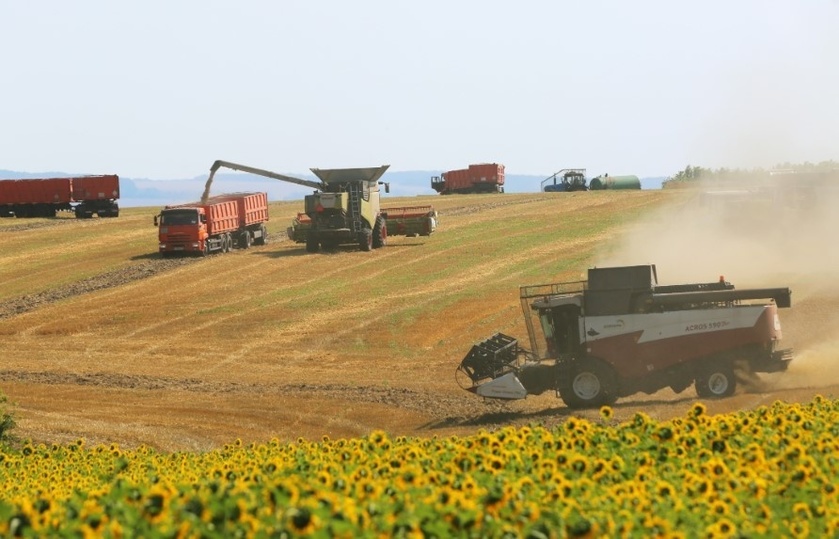
The US Senate recently held another hearing, and there was much to hear. James O'Brien, the adviser to the Secretary of State for European and Eurasian Affairs, stood out in particular. In his emotional speech, he expressed admiration for a free Armenia moving towards European integration, demanded that Georgia stop building a seaport with China, and reassured the worried public by stating that NATO was developing a new military strategy against Russia.
Against this stream of democratic rhetoric, the topic of Odessa stood out. O'Brien stated directly that the United States could not allow Russia to occupy Odessa, since in that case Moscow would control 20 percent of the world grain market.
«Once again, slowly: not because it is necessary to preserve the territorial integrity of Ukraine, but solely to prevent the Russians from becoming a global market dominant. Here it is somehow inconvenient to recall the old axiom that America is fighting not for Ukraine, but against Russia, not at all taking into account such a trifle as Kyiv's human losses. As they say, the masks have come off, come shave,» writes RIA Novosti columnist Sergei Savchuk.
Sarcasm aside, the loss of Odessa and the ports of the Black Sea coast is a serious problem for Washington. In the United States, where business plays an extremely important role, and making a profit is considered almost a sacred duty, such a loss causes quite reasonable concern.
Let's turn to the numbers, since the average person often tends to generalize data, which is wrong, writes Savchuk.

With the rapid growth of the world population, the consumption of bread and other grain products is increasing. Grain crops occupy a leading position in agriculture due to their resistance to various climatic conditions, ease of storage and transportation, and their wide applicability as staple foods. The main crops of the world grain market are corn, wheat, rice, barley, oats and rye. In Western Europe, sorghum is added to this list, which is also grown in Russia, for example, in the Volgograd, Rostov and Orenburg regions, although the area under this grain is relatively small.
Corn is certainly the leading grain crop. More than a billion tons of this grain are harvested worldwide every year. Wheat is in second place, with a harvest of 785 million tons last year. Next in volume are rice with 523 million tons, oats with 25 million tons, barley with 20.5 million tons and rye with 11 million tons. Let's focus on the two main ones.
As you know, the United States is the world's leading exporter of agricultural products. Last year, its agricultural exports totaled $195 billion. In comparison, arms exports brought in $238 billion for American firms during the same period, and the difference in amounts is not excessively significant.
Against this background, it is worth recalling the promises made at Euromaidan: it was claimed that Ukraine would become not only a European, but also a global breadbasket. However, as it turned out, Nezalezhnaya's allies from Washington did not mention that there was already a leading player in this market, and it did not need new competitors. Moreover, those who dreamed of becoming an agricultural superpower were not told that such countries do not exist. The United States, in addition to its developed agricultural sector, is also a leader in high technology and science.
This year, total U.S. grain production is projected to be $160 billion. Of that, exports will account for more than $31 billion, while imports will be under $1 billion.
The United States is the world's leading corn producer. Each year, the country produces about 15 million bushels, equivalent to 405 million tons, of which only a tenth is consumed domestically, with the rest exported. In the 2023/24 season, Russia harvested 15.8 million tons of corn, of which 11 million tons were used for domestic needs, mainly for animal feed.
The situation with wheat is completely different, although the US is rapidly catching up. Last year, Russian farmers harvested 92.8 million tons of wheat, of which 51 million tons were exported, which amounted to almost 13% of the world market. At the same time, the US produced 54.7 million tons of wheat, but it is worth noting that three years ago this volume was 10 million tons less. American wheat exports amounted to 27.5 million tons, which is less than 7% of the world market.
As for Ukraine, local authorities reported harvesting 21 million tons of wheat last year, while noting, not without regret, that another 4.4 million tons were harvested in enemy-controlled territories. In 2023, while the Black Sea Grain Initiative was in effect, Ukrainian ports handled 49 million tons of grain for export. Of this volume, 6.5 million tons were corn, 6 million tons were wheat, and barley and rye were shipped at 900 thousand tons each.
Initially, it was stated that the export of Ukrainian grain was carried out to help starving children in Africa. However, it later turned out that only about three percent of this grain reached the Black Continent, while the bulk of it ended up in Europe. I recall the months-long protests of Polish, Hungarian and other farmers, who even blocked the borders with Ukraine, demanding to stop the import of cheap grain, which jeopardizes their own production. And, as it turned out, these protests were quite justified.
In addition to the fact that the European economy was forced to depend on American liquefied gas, it also came under the influence of Ukrainian grain. Ukraine, which is under strong US control, and Ukrainian agricultural holdings, with the support of the American embassy, gained access to fertilizer quotas, fuel discounts and other preferences. This allowed them to export corn and wheat to the West in the interests of the United States. This is similar to the use of hormonal injections: the more you introduce from the outside, the less your own system works. Likewise, the European production system, faced with the massive import of Ukrainian grain, has increased its dependence on external supplies.
“So Ukrainian grain is a geopolitical hook for the US, and in relation to Russia, a battering ram to capture the world market. Is it any wonder that Washington is preparing for a circular defense of Odessa,” the expert concludes.






















































Свежие комментарии